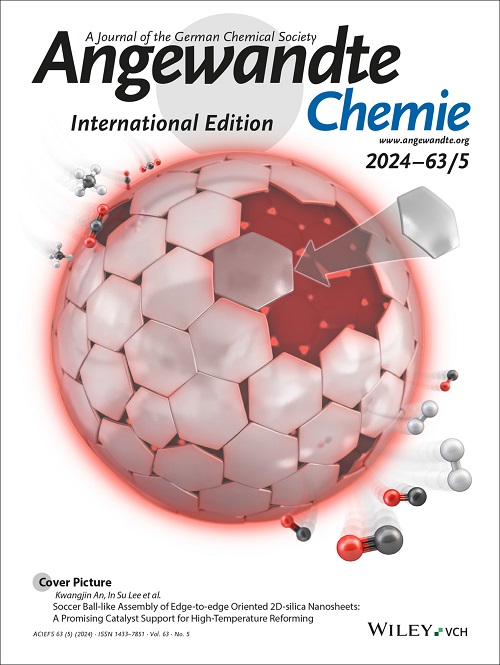Symmetry-Breaking Strategy Yields Dopant-Free Small Molecule Hole Transport Materials for Inorganic Perovskite Solar Cells with 20.58% Efficiency and Outstanding Stability
IF 16.1
1区 化学
Q1 CHEMISTRY, MULTIDISCIPLINARY
引用次数: 0
Abstract
Inorganic perovskites are known for their excellent photothermal stability; however, the photothermal stability of all-inorganic n-i-p perovskite solar cells (PSCs) is compromised due to ion diffusion and free radical-induced degradation caused by the use of doped Spiro-OMeTAD hole transport materials (HTMs). In this study, two isomeric D-A-D type small molecules, namely HBT and HiBT, were developed and used as dopant-free HTMs, using 2,1,3-benzothiadiazole or benzo[d][1,2,3]thiadiazole as acceptor moieties. The HiBT molecule, with its symmetry-breaking features, exhibits a large dipole moment, enhanced coordination-active sites, and a well-aligned energy level structure, all of which contribute to passivating perovskite surface defects and improving free charge separation. As a result, inorganic CsPbI3 PSCs with HiBT HTM achieved an impressive power conversion efficiency (PCE) of 20.58%, the highest reported for dopant-free HTM-based inorganic PSCs. Moreover, the enhanced hydrophobic properties of HiBT molecules, coupled with their ability to passivate perovskite surface defects, contribute to significantly improved device stability.打破对称性策略为无机包晶太阳能电池提供无掺杂剂的小分子空穴传输材料,效率达 20.58% 并具有出色的稳定性
本文章由计算机程序翻译,如有差异,请以英文原文为准。
求助全文
约1分钟内获得全文
求助全文
来源期刊
CiteScore
26.60
自引率
6.60%
发文量
3549
审稿时长
1.5 months
期刊介绍:
Angewandte Chemie, a journal of the German Chemical Society (GDCh), maintains a leading position among scholarly journals in general chemistry with an impressive Impact Factor of 16.6 (2022 Journal Citation Reports, Clarivate, 2023). Published weekly in a reader-friendly format, it features new articles almost every day. Established in 1887, Angewandte Chemie is a prominent chemistry journal, offering a dynamic blend of Review-type articles, Highlights, Communications, and Research Articles on a weekly basis, making it unique in the field.

 求助内容:
求助内容: 应助结果提醒方式:
应助结果提醒方式:


